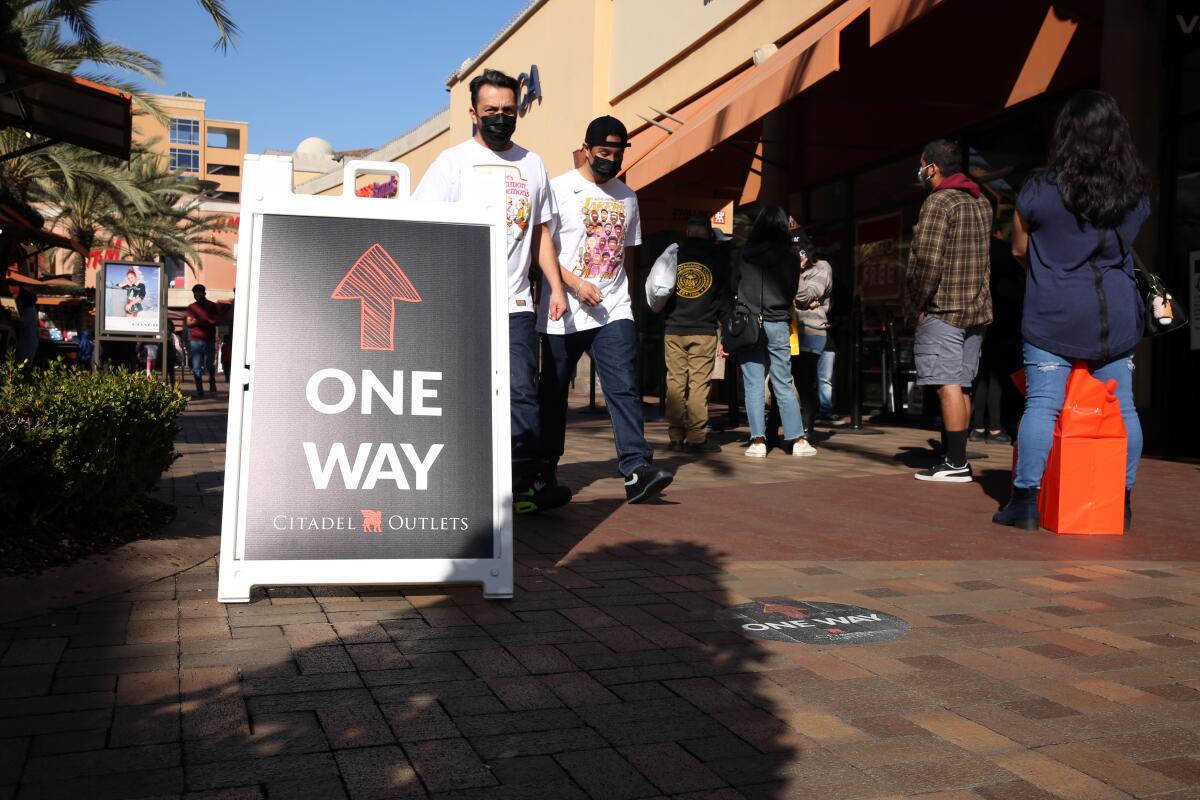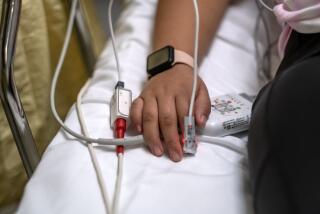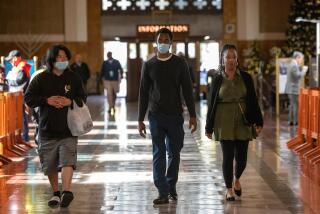Editorial: Covid-19: The gift that keeps on taking

- Share via
This Christmas, the best present you can give to friends and family is the gift of good health and future prosperity.
How to do that? By doing nothing — as in no shopping sprees, no partygoing, no large family gatherings. In short, no fun.
It’s a tremendous ask, but consider the benefits of sacrificing the usual holiday traditions now for a payout in January and beyond: available hospital beds for those who need them, relaxed safer-at-home restrictions, reopened restaurant patios and hair salons, and a lower body count.
It would be an amazing gift to healthcare workers as well. Though they are the first people slated to get COVID-19 vaccinations, it will be weeks until they are all fully protected. Meanwhile, these frontline workers have already paid a terrible price. A joint investigation by Kaiser Health News and the Guardian identified more than 2,900 U.S. healthcare workers who have died from COVID-19.
If not, well, the bill for overindulgence at the holidays will come due in January. Gov. Gavin Newsom on Wednesday described what that bill might look like: “a surge on top of a surge on top of a surge.” In other words, a catastrophic scenario that could lead to an incalculable loss of life. Dr. Christina Ghaly, the director of L.A. County’s Department of Health Services, said it could mean a 50% increase in demand at local hospitals, which are already operating their intensive care units at or above capacity.
Adding to the concern is the discovery of a new and more contagious strain of the coronavirus. It may not be more deadly than the earlier strain. But if the new version is more adept at slipping through our usual defenses, it could result in more deaths nonetheless. This new strain was detected first in the United Kingdom and has been found in other countries as well. Scientists suspect the new strain arrived in the U.S. in November, but don’t know for sure.
What this means in a practical sense is that the calculations that people have been making about the risks versus the benefits of traveling, gathering with friends, visiting family and going out shopping may be fundamentally flawed.
Despite the complaints from people who argue that public health orders are unreasonable, the closures at the moment aren’t as broad as they could be — even for Southern California, which is under the state’s strictest measures. Nonessential retail stores are still open, though at reduced capacity — and malls too, though they have experienced some dangerous pre-Christmas crowding. You can’t sit down at a restaurant, but takeout is still available. Casinos and golf courses are still open. Dissenters can protest in dangerous ways. And thanks to court orders, churches can hold indoor services and strip clubs can continue to operate. Nonessential travel is prohibited, but who’s checking?
Even so, there has been widespread and open defiance of state and county pandemic orders. Yet California officials have done little to crack down on the lawbreakers or the businesses that encourage lawbreaking.
A coalition of Los Angeles County unions and community organizations is leading a growing push for a four-week period of tightened restrictions next month to slow down infections. We sure hope it doesn’t become necessary to take such drastic action, but that will depend in large part on how we conduct ourselves over the next week during our Christmas, New Year and Kwanzaa celebrations. Public health officials say that the current COVID-19 surge was driven by infections over Thanksgiving.
If state and local authorities consider more restrictions, they must also consider how they will enforce them. If the public continues to see that ignoring health orders comes with impunity, further restrictions will be meaningless, regardless of how well-founded they are in science and how effective they’ve been in other countries. Education time is over. People who brazenly endanger others must face consequences.
But because this is Christmas Eve, we’d like to end on a hopeful note. Data released Wednesday by state and county officials suggest this latest round of restrictions has had some success, albeit modest. The state’s weekly average rate of positive COVID tests has ticked down over the last few days, from 13.3% to 12.6%. It’s not a huge decrease, and the rate remains higher in Los Angeles County, but it’s a good sign that the message from public health authorities is sinking in. Let’s keep complying and give ourselves the gift of staying on track.
More to Read
A cure for the common opinion
Get thought-provoking perspectives with our weekly newsletter.
You may occasionally receive promotional content from the Los Angeles Times.










